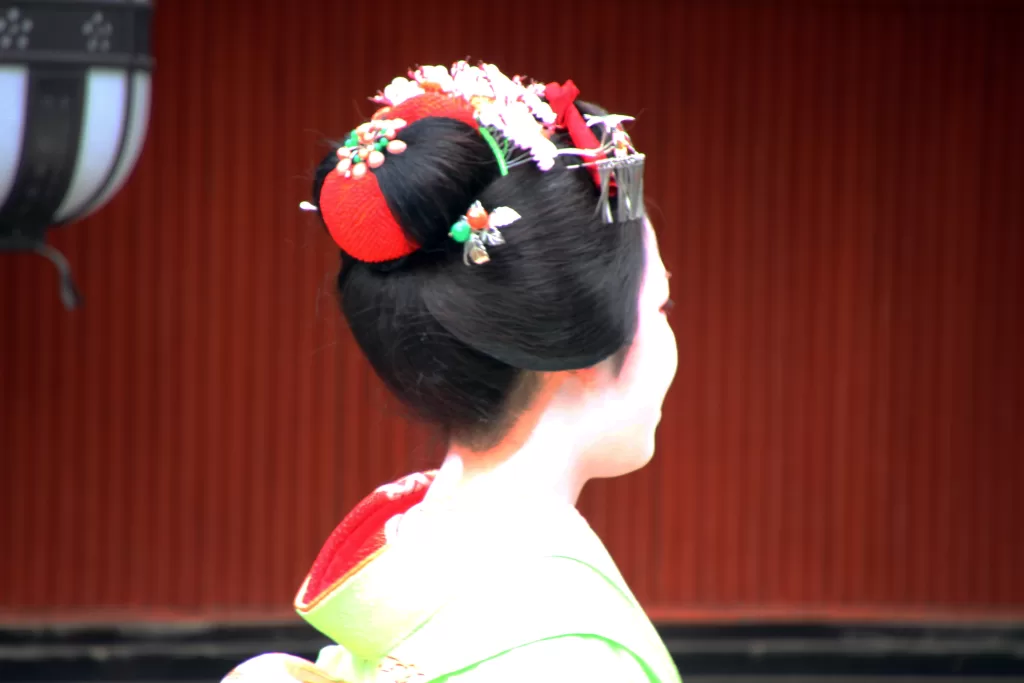Kitano Tenmangū Setsubun Festival: A Unique Celebration in Kyoto

The Japanese calendar is fraught with various cultural and seasonal festivals, one of which is the much-awaited ‘Setsubun’ festival. An ancient ritual marking the day before spring begins as per the lunar calendar, it has firmly held its place as a popular tradition even today. It revolves around the throwing of roasted soybeans, symbolically driving out accumulated bad luck (ogres, or ‘oni’) and welcoming in good fortune. The phrase chanted during this rite, “oni wa soto, fuku wa uchi”, translates to “ogres outside, good luck inside”.
Taking place every year on Februry, the Setsubun festival boasts unique features across the many temples and shrines in Kyoto participating in this celebration. Among them stands out Kitano Tenmangū Shrine for its unmatched grandeur and vibrant rituals. It’s one of the most awaited Kyoto events in February.
Kitano Tenmangū Setsubun Festival
Yomomairi: A Distinctive Tradition
Kyoto’s culture enhances the Setsubun festival with an exclusive custom called Yomomairi. This practice involves visiting four shrines located around the Imperial Palace, protecting it from all four directions. As per local mythology, a demon appears at Yoshida shrine on Setsubun night and moves on to Yasaka Shrine and Mibu temple in an attempt to evade pursuers. The demon’s escape route finally leads it to the Kitano Tenmangū shrine where it is captured and confined forever.

Ritual Events at Kitano Tenmangū
Unique to Kitano Tenmangū are several ritual events of dedication. These include performances of Noh comedy plays known as ‘Kitano Tuina Kyogen’, presented by Shigeyama Sengoro school, an authentic clan specializing in Noh comedy. Adding charm to these centuries-old traditions are performances by celebrated Maiko (apprentice geisha) and Geiko (fully qualified geisha), who hail from Kamishichiken district.
These delightful performances make way for the prime event of Setsubun – bean throwing or mamemaki – heralding its climax. This ritual sees enthusiastic participation from everyone present at the shrine.
Just when you think it cannot get any better, packets of lucky beans are tossed into the crowd. Catching some brings good fortune home! This moment filled with anticipation while waiting to seize a bag of lucky beans is a highlight for many festival goers who consider it an integral part of their annual Setsubun celebrations.
Communal Celebrations at Local Shrines
Not just Kitano Tenmangū but several other local shrines have been proactive in providing a space for community celebrations of Setsubun. The communal festivities commence with a charge led by priests and local elders holding plum branches followed by ritual chants and invocation.
Soon after these rites comes the appearance of a demon masked entity representing bad luck. In an enactment reminiscent of a Kyōgen play – considered as a lighthearted variant of the deeper-themed Nō theatre – this representation is driven off stage with handfuls of beans.
This colorful event provides not just a cultural spectacle but also encourages active participation by locals and visitors alike.
So next time you plan your Japan vacation, coincide your visit with Kyoto’s most vivid festival season and take home a piece of their rich traditional heritage – plus maybe few lucky beans too!
And remember – “oni wa soto, fuku wa uchi!”
Another unforgettable Setsubun Festival experience is the Heian Jingu Setsubun Festival in Kyoto. This renowned celebration is known for its rich traditions, symbolic rituals, and captivating performances that beckon the arrival of spring while warding off evil spirits. At Heian Shrine’s inner sanctuary, priests perform sacred Shinto rituals, setting an auspicious tone for the day with prayers and cleansing actions.